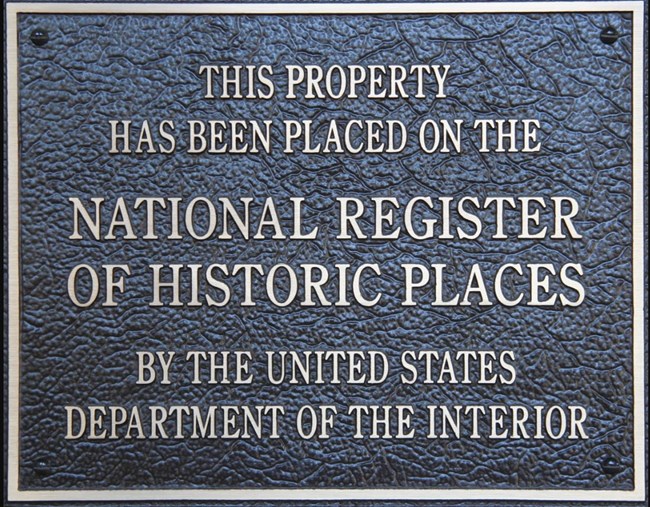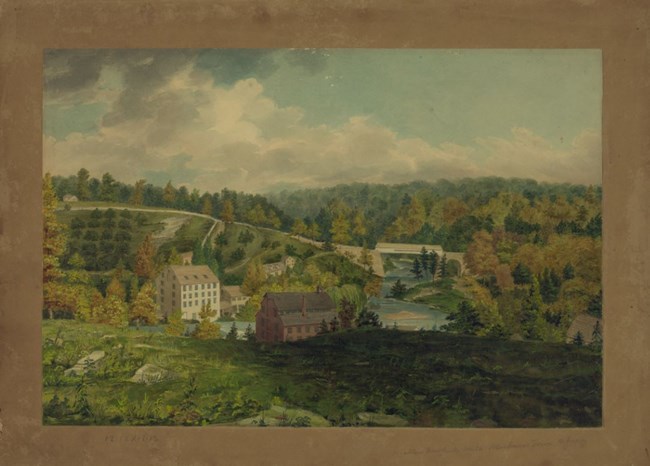Part of a series of articles titled Teaching with Historic Places Program and Where Did History Happen?: Selections from CRM, Vol 16, no 2 (1993).
Article
Teaching with Historic Places: Prominent Places for Historic Places: K-12 Social Studies Curriculum

Selections from a Thematic Issue of CRM Vol 16 No. 2 1993
Published by the National Park Service, Cultural Resources
By: John J. Patrick
Prominent Places for Historic Places: K-12 Social Studies Curriculum
Curriculum reformers of the 1980s and 1990s have emphasized knowledge and skills that all students should learn to be equipped for intelligent and fruitful participation in the 21st century world. In 1983, Ernest Boyer and other leaders of curriculum reform called for development of a new core curriculum for schools. Boyer wrote, “A core of common learning is essential. The basic curriculum should be a study of those consequential ideas, experiences, and traditions common to all of us.” [1]
In 1993, Diane Ravitch and others heralded national standards projects as one means to carry out the continuing calls for a new core curriculum. The mission of these projects is to identify clearly and compellingly what all students need to know and be able to do to become well-educated participants of a vibrant, free society.[2] Three of the National Standards Projects pertain to core subjects of the social studies curriculum: history, geography, and civics.
There are prominent places or openings for content about historic places in the emerging social studies core curriculum exemplified by the National Standards Projects. Historic places are tangible forms of our legacy from preceding generations, and, like written primary sources, they embody and reflect the traditions, experiences, ideas, and controversies of our past. The National Register of Historic Places database includes information on a variety of properties in all regions of the country.

Library of Congress, http://loc.gov/pictures/resource/ppmsca.23136/
The historic places in the National Register can be used by teachers and students as objects of inquiry, in the same way that written primary sources are used in the classrooms of good history teachers. Teachers unable to take students directly to particular sites – because of such barriers as too many miles or too few funds – can use video programs, photographs, or specially developed learning materials about these places. The contents and pedagogy of two sets of instructional materials developed by the National Park Service and the National Trust – the Teaching with Historic Places lesson plans, and the “American Work, American Workplaces” educational kit – fit directly into the priorities of the History Standards Project, which has included historic places in its list of sources of evidence for historical inquiry by students.[3]
Item six in the History Standards Project’s list of 15 criteria says, “Standards should include awareness, appreciation for, and the ability to utilize a variety of courses of evidence from which historical knowledge is achieved, including written documents, oral tradition, literature, artifacts, art and music, historical sites, photographs, and films.”[4] Thus, the National History Standards and school curricula that reflect them include the use of historic places as primary sources for students to interpret, analyze, and evaluate in combination with written documents and other primary sources.
Item 12 in the History Standards Project’s list of criteria also pertains directly to the use of historic places: “Standards in US history should utilize regional and local history by exploring specific events and movements through case studies and historical research.”[5] The resources of local history and culture certainly are a readily accessible laboratory for studies of culture in the past and present, especially the material culture embodied in historic places. Curricula developed in terms of the History National Standards will include nearby historic places as focal points of investigation. Howe4ver, lessons on places in local history are flawed if treated in isolation from the larger history and culture of the United States and other parts of the world. The best teaching about places and events of local history connects them to broader events and themes in national and world history.
In addition to fitting the priorities of the History Standards Project, historic places as objects of inquiry also are compatible with the teaching and learning of geography as envisioned by the geography educators of the 1980s and 1990s. Geography educators have formulated five fundamental themes as organizers of content and instructional activities in the school curriculum: location, place, relationships within places, movement, and regions.[6] Teaching and learning about each of these five geography themes can be greatly enhanced through the use of historic places.
In one illustration, Brandywine Creek near Wilmington, DE was an important site in the early industrial development of the United States. In 1803, Eleuthere Irenee du Pont built a gunpowder factory along the Brandywide. By 1810, the Eleutherian Mills was America’s largest gunpowder factory. Today, it is preserved as a historical landmark, open to the public, and is a source of data relevant to all five geography themes. Students could conduct investigations about (1) the factory’s location along Brandywine Creek, (2) its physical and human characteristics during the first decade of the 19th century, (3) the impact of workers on the environment and its impact on them, (4) the movement of people and goods into and out of this place, and (5) the impact of this place on the development of the Mid-Atlantic region of the United States.[7]
The use of historic places in teaching fundamental themes of geography indicates the great educational value of closely connecting history and geography in the school curriculum. Key concepts of geography are tied inseparably to major ideas of history, such as time, period, and events. Geography and history in tandem enable learners to understand how events and places have affected each other across time, how people have influenced and been influenced by their environments in different periods of the past.[8]
Historic places clearly can have a large place in the history and geography facets of the emerging K-12 social studies curriculum. They have been prominently recognized in the work of the History Standards Project, and they are compatible with key ideas of the Geography Standards Project. Historic places are valuable primary sources of data to be used in conjunction with primary documents in studies of the past. Historic places can also be used to illuminate fundamental themes of geography. Finally, historic places can become links for builders of curriculum connections between geography and history.
[1] Ernest L. Boyer, High School: A Report on Secondary Education in America (New York: Harper & Row, 1983), p. 302
[2] The US Department of Education, in collaboration with major associations of scholars and educators, has launched National Standards Projects in mathematics, science, history, geography, civics, the arts, and English.
[3] Charlotte Crabtree, National History Standards Project: Progress Report and Sample Standards (Los Angeles: National Center for History in the Schools, November 1992), pp. 23-24.
[4] Ibid, p. 23
[5] Ibid, p. 24
[6] Joint Committee on Geographic Education, Guidelines for Geographic Education (Washington, DC: Association of American Geographers and the National Council for Geographic Education, 1984); the five fundamental themes of geography education have been incorporated into the Geography Assessment Framework for the 1994 National Assessment of Educational Progress, and they are being used in the Geography Standards Project.
[7] The Agency for Instructional Technology (AIT) has produced a prize-winning instructional video program for use in secondary schools – “The Industrial North” – which highlights the Eleutherian Mills. It is part of a 16-program series, America Past, which emphasizes historic places.
[8] The Agency for Instructional Technology (AIT) has produced a series of 10 video programs, Geography in US History, which emphasize historic places. These programs, produced in 1992, have been designed for use in secondary school US history courses. Two of the programs in this series have been awarded prestigious national prizes.
At the time of publication, John J. Patrick was a professor of education at Indiana University, where he also served as Director of the Social Studies Development Center and Director of the ERIC Clearinghouse for Social Studies/Social Science Education.
Last updated: July 8, 2019
